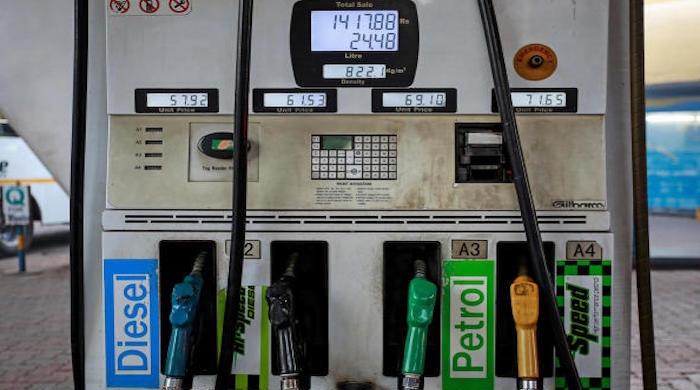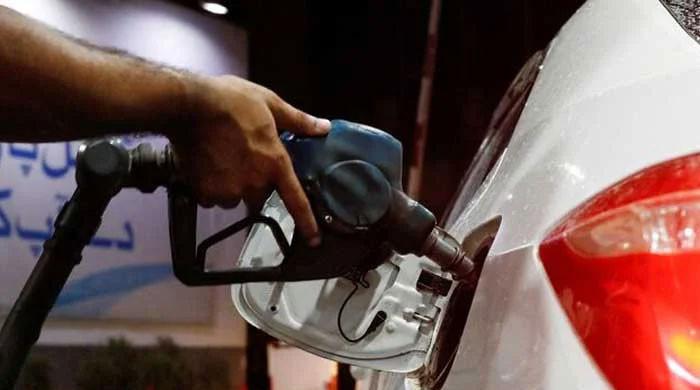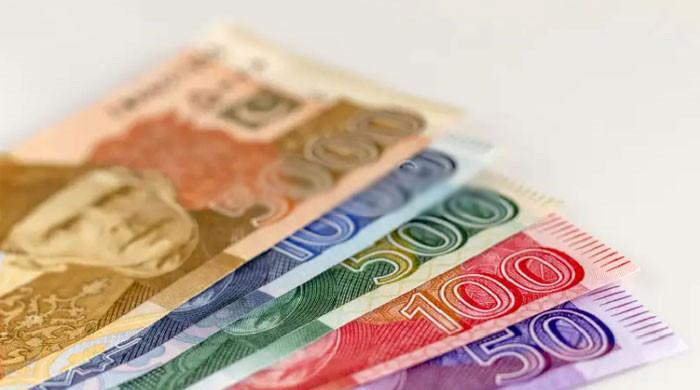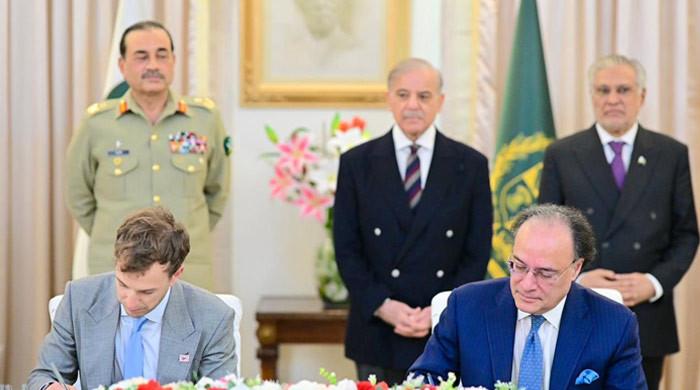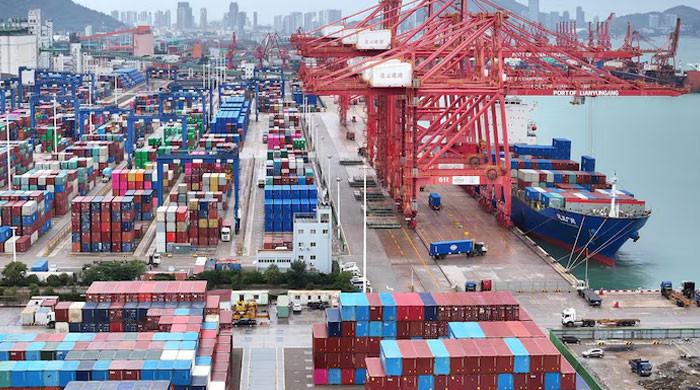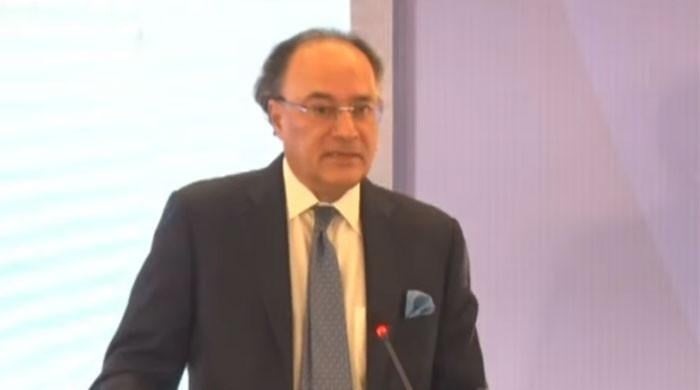IMF, Pakistan reach deadlock
IMF discovers yawning gap between cost and official estimates provided by Pakistani authorities for PM's relief package
March 25, 2022
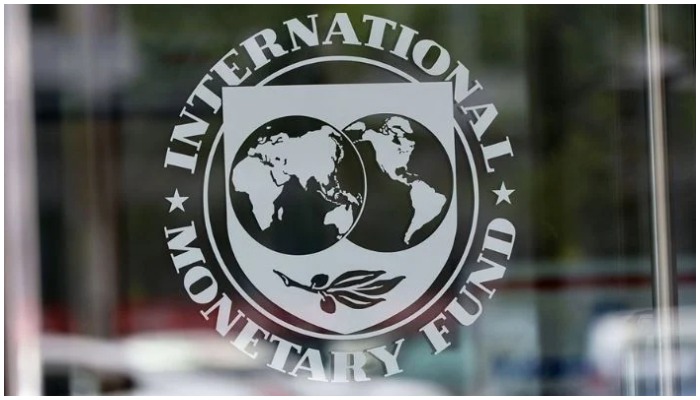
- IMF discovers yawning gap between cost and official estimates provided by Pakistani authorities for PM's relief package.
- Fund estimates that relief package and other loans would cost almost double the amount of Rs425bn against official estimates of Rs220bn.
- Foreign currency reserves depletion pose serious risk of eruption of the balance of payment crisis.
ISLAMABAD: The International Monetary Fund (IMF) and the government of Pakistan are said to have reached a deadlock amid ongoing talks for the seventh review after the Fund discovered a yawning gap between the cost and official estimates provided by Pakistani authorities for the Prime Minister's relief package and Kamyab Pakistan Program (KPP), The News reported, citing top official sources.
The lender has estimated that the PM's relief package for slashing down petrol, diesel, and electricity prices as well as doling out of KPP loans would cost almost double the amount of Rs425 billion against official estimates of Rs220 billion only.
Meanwhile, foreign currency reserves nosedived by $869 million held by the State Bank of Pakistan (SBP) just in a single week that ended March 18, 2022. The reserves depleting at a supersonic speed poses a serious risk for the eruption of a balance of payment crisis while the country is already going through political turmoil.
“This yawning gap between the estimates of the IMF and Pakistani side created a stalemate-like situation and both sides so far failed to evolve consensus for striking staff-level agreement,” top official sources said.
According to the estimates calculated by the IMF side and shared with Pakistani authorities, the petrol and diesel prices stood in the international market to the tune of $120 per barrel which according to the Fund staff, requires Rs55 billion per month subsidy and in totality will require Rs220 billion in four months (March-June) period of the current fiscal year. The consumption of diesel stood at 625,000 tons and MS Petrol 700,000 tons on monthly basis.
The government had calculated lower estimates since the price in the international market stood at $85 per barrel and they had estimated that it could go up to $95 per barrel. The rupee-dollar parity stood at Rs 178 against the US dollar which has now crossed Rs 181.20 against the US dollar. The electricity tariff reduction of Rs 5 per unit will have a financial impact of Rs 136 billion for four months period. The IMF has also assessed that Kamyab Pakistan Program (KPP) to cost a subsidy of Rs 69 billion in four months period of the current fiscal year.
The IMF also pointed out that the tax amnesty for the industrial sector was a persistent/continuous structural benchmark agreed by Islamabad on the occasion of the conclusion of the 6th review under the IMF program but Islamabad breached this condition blatantly so they did not know to justify it before the IMF’s Executive Board.
Ministry of Finance on Thursday issued a statement saying that sections of the media have been speculating recently about the ongoing 7th review under IMF’s Extended Fund Facility (EFF). “It is clarified that negotiations under the 7th review are continuing as planned and the two sides remain engaged regularly at a technical level through virtual meetings and data sharing” it added.
It further said that the focus of negotiations under the 7th review has been on the agreed targets between the two sides, as well as the recently announced relief and industrial promotion packages. There is a consensus that all the end-December agreed targets have been achieved, while progress on other actions mentioned in the Memorandum on Economic and Financial Policies (MEFP) for the 6th review have also been found to be satisfactory. “On the relief package, complete details, including financing options, have been shared with the IMF and a general understanding has been developed. IMF has, however, indicated the need for some further discussions on the industrial promotion package over the next few days. An understanding is expected to be developed on the said package after those discussions” the Ministry of Finance added.
Upon completion of the technical talks, the text of the Memorandum on Economic and Financial Policies (MEFP) for the 7th review will come under discussion. The Government is confident that the finalization of the MEFP would lead to the IMF Board meeting towards the end of April. The Government remains committed to completing the IMF program successfully in September, the ministry added.
This scribe contacted Dr Khaqan Najeeb, former Advisor, Ministry of Finance, said it is important for Pakistan to complete the ongoing programme with the IMF. External financing needs swelling above $ 32 billion for FY22 and SBP reserves falling by $869 million in a week to $ 14.9 billion on 18th March, require successful completion of the seventh review of the IMF program.
The talks with IMF of course besides technical issues have got overshadowed by the evolving political landscape, he added. On the technical side discussions with the IMF need handling of the breach of continuous structural benchmarks indicating that no new amnesties would be given during the program duration. The authorities have hopefully clarified that the amnesty is more of an industrial package that entails five-year tax holidays on projects with investment by Pakistani expatriates in Pakistan, he maintained.
Dr Khaqan said other areas need agreement like the commitment of raising petroleum levy by Rs 4 per month until it reaches the level of Rs 30 per liter. This is understandably difficult due to the unprecedented rise in world oil prices and it is hoped the IMF would see it leniently.
However, the recent freezing of pricing of petroleum products in the country adds a new dimension in our conversation with the IMF. The over-all amount of subsidy or the PDC needed due to oil price freeze has increased from prior estimates, as oil trades over $ 121 and rupee depreciates to Rs 181.73 to a dollar. In addition, electricity subsidy of Rs 5 and Kamyab Pakistan and Ehsaas Program interventions and Scholarships for four months add further financing needs of subsidy. If full payments from the exchequer are not made there is a risk of new circular debt building up requiring firm commitment on dividends from SOEs, cut in PSDP, provinces pitching in and FBR making Rs 6.1 trillion in FY22 are all necessary conditions to convince the Fund for the conclusion.
He said it appears that the zero-primary deficit in 2021-22, excluding grants would be unlikely and the authorities would have to give cogent reasons for the breach. In the end one has to see the new macro framework, especially on the external side with the 8 months FY22 current account at $12.3 billion near the $13.0 billion estimated by IMF for the entire FY22 in their last discussions, he concluded.




